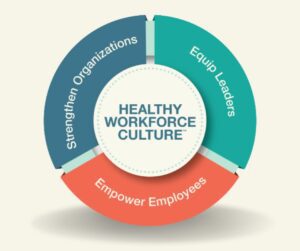
The longstanding issue of silos in healthcare has been a problem for decades. Physicians, nurses, respiratory therapists, and other professionals operate within their own spaces, despite professing to be part of a unified team. The persistent practice of separating team members based on their roles prevents genuine collaboration, thereby leading to miscommunication, fractured care, and overall dysfunction. It’s high time we actually start using some strategies to breaking silos in healthcare for good.
A Chief Medical Director and the Nursing Director reached out to me for help to improve the relationships between their physicians and nurses. They were dealing with a lot of interprofessional and interpersonal conflicts which were impacting the teams’ morale (they had a lot of turnover), performance, and the delivery of patient care. Because this is our specialty, they reached out to discuss how we could help them with this problem.
When I asked about how they engage in conversations about these issues, the nursing director shared that she and her nurses meet regularly, discuss issues, incorporate skill development, etc.
The medical director shared how she and her physicians and providers meet regularly, discuss issues, incorporate skill development, etc.
And then I asked, do you ever meet together to discuss these issues?
They paused, looking like a deer in headlights.
They said no.
How are they supposed to improve interprofessional communication, relationships, retention, morale, etc. if they aren’t even talking with each other as a collaborative team?
What are the strategies for breaking silos in healthcare?
Learn together
I’m sure you’ve heard the example, if you want to create an all-star basketball team, you wouldn’t send your center to center school, your forward to forward school, and your guard to guard school and then expect them to play well in the championship game.
But that’s exactly what we do in healthcare.
We send physicians to med school, nurses to nursing school, therapists to therapy school, etc. Yet, we wonder then why we aren’t able to “win” the game.
Instead, we need to bring the entire team together to learn the interpersonal skills they need to become a strong, high-performing, respectful team.
Breaking silos by hardwiring ongoing interprofessional skill development.
-
Once a month, create space for learning.
This can be as a separate learning session or added to an existing one. The key is that it should involve the entire team (nurses, physicians, techs, therapists, leaders, etc.
-
Include topics that impact team communication.
Incorporate content to help your teams develop their assertive communication skills, learn how to give and receive feedback, how to reduce gossip, resolve conflict, build high emotional intelligence, etc.
-
Take turns facilitating
If you’re the nurse manager, don’t put this “burden” on your shoulders only. Rotate facilitation. One month it’s nursing, the next, it’s the physicians who choose the topic and facilitate, the next, it’s respiratory, etc.
Teams who learn together are stronger and less burned out than teams who don’t.
Flatten the hierarchy
We know this. One of the reasons why we see more disruptive behaviors in healthcare than in any other industry is due to a steeped hierarchy. You have executives, senior leaders, front-line managers, supervisors, and then everyone else.
You have physicians, nurses, therapists, techs, and everyone else.
It’s not having a hierarchy that’s the problem, it’s when someone uses their status to squash someone else. That’s when it becomes a problem.
Hierarchy in healthcare also shows up as tenure. A tech who has been there for decades may perceive that they have more power over a nurse or new physician.
So, how do you flatten the hierarchy so that nobody perceives that they are better than anyone else?
-
Make it safe for everyone to speak up.
This means creating a culture of psychological safety. If you haven’t read Amy Edmonson’s work, do it.
-
Stop having special privileges for certain roles.
If you have a special lounge just for physicians or members of the C-Suite, consider opening it to everyone. Or what about “physician premier parking”? I understand that some people need to get to the point of care quickly so, just change the label on the parking spaces from “physician parking” to “urgent clinician parking”.
-
Invite everyone to the decision-making table.
I’m not saying that you should ask an EVS employee to make decisions on strategic goals but it’s important to get their input. Host meetings where you invite representatives from various roles and departments to engage in discussions regarding how to make your organization – better.
Just remember, having a hierarchy is fine as long as you don’t make it clear that some roles are more important than others. Breaking silos requires you to level the playing field by emphasizing the importance of all roles.
Breaking silos by developing lateral agility
According to the Harvard Business article, How to Lead Across a Siloed Organization by Jeff Rosenthal and Molly Rosen, lateral agility is the ability to change direction and move side to side quickly while maintaining your balance.
-
Lead across. Not just with your team.
As a leader, it’s important that you also lead other members of the healthcare team. Just because they don’t report to you doesn’t mean that you shouldn’t intervene if they are being disruptive.
-
Build relationships with key stakeholders outside of your team.
Become “best friends” with key leaders outside of your role. If you’re a nurse, build a strong partnership with your COO, the Director of Pharmacy, the Medical Director of your service line, the EVS Supervisor, etc. Doing so helps you to widen the lens you use to make decisions.
-
Drop the we versus them mentality and encourage your teams to do the same.
If we’re truly going to build a stronger team, we have to stop demonizing various roles. It can’t be “the physician’s” fault or…it’s those nurses. Or worse, “management”. Instead, we need to approach from the perspective of individual contributions and value…and then oh, they happen to be a nurse, physician, manager, etc.
Silos in healthcare happen because they can. Without realizing it, we make the walls between us thicker and thicker because that’s the way it’s always been done here. It’s time we break the silos once and for good. By adopting the strategies outlined above, we can all come to the championship game, equipped, prepared, and ready to win!












